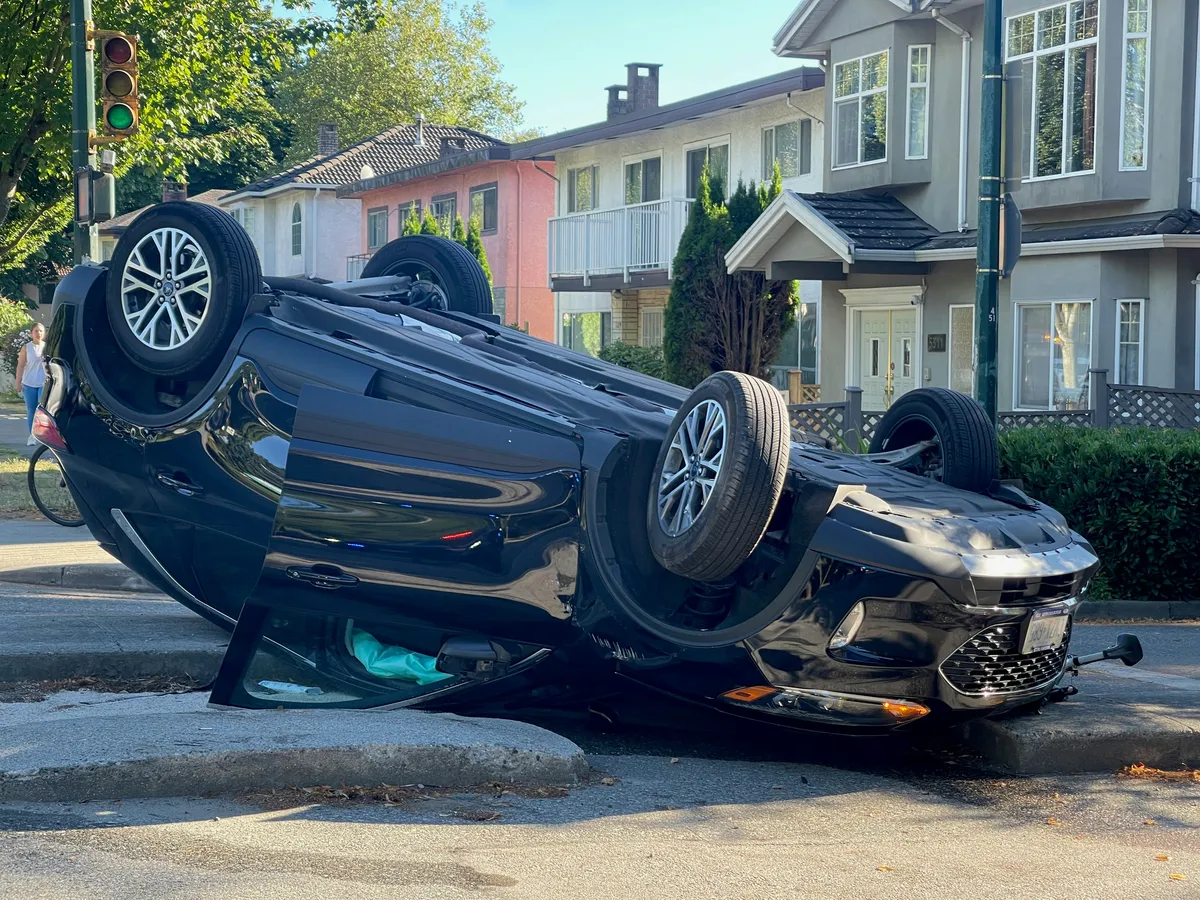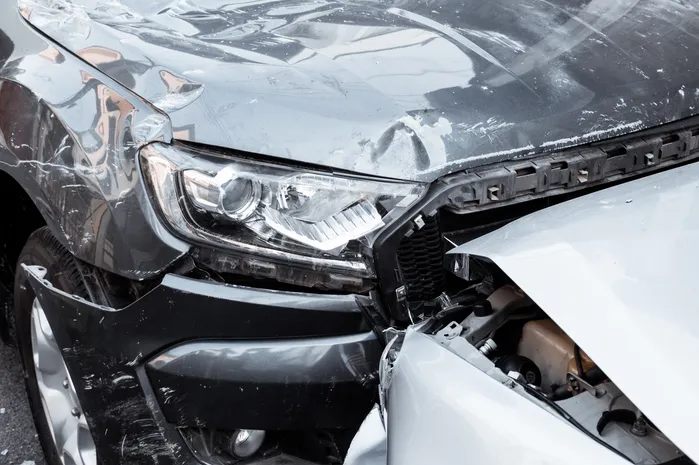8 min read time
Summary
About 52% of personal injury claims are car accidents.
Table of Contents

What Percentage of Personal Injury Cases Are Car Accident Claims
Car accident claims account for roughly half of all personal injury cases, with data indicating that about 52% of the 39.5 million annual personal injury filings stem from motor vehicle crashes.
This percentage reflects the high number of people injured by traffic accidents each year, with 2.3 million people being injured in motor vehicle accidents and 5.2 million seeking medical care for personal injuries stemming from car accidents.
The remaining 48% of personal injury claims arise from other causes such as slip and falls, medical malpractice, product liability cases, workplace accidents, and premises liability.
Within the personal injury law landscape, car accidents remain the dominant subset, underscoring the importance of focusing legal resources on vehicle-related injury cases to capture the largest share of potential recoveries and compensation.
Regional Differences in Car Accident Claim Rates
In the U.S., car accident claim rates vary by region, with the Northeast reporting higher per-capita car accident filing figures than the Midwest.
The South tends to have lower claim volumes, reflecting stricter licensing rules and higher vehicle safety ratings.
Regional patterns shape insurance companies' premiums, the speed of settlements, and the quality of personal injury lawyers in an area.
Key Demographic Factors in Car Accident Filings

Understanding how age, gender, income, and other demographic factors have an effect on car accident claims helps law firms better target their legal services and anticipate personal injury settlements.
Below, we cover factors that influence both the likelihood of filing a personal injury claim and the potential recovery amount, including economic damages, medical costs, and lost wages.
Age Distribution of Car Accident Claimants
Car accident claimants have a relatively spread-out age pattern, reflecting the high percentages of motor vehicle accidents each year across all age groups, unlike accidents like slip and falls, which are more common with an older demographic.
Younger drivers under 25 file fewer claims, whereas middle-aged adults (35-54) represent the bulk of car accident filings.
Car accident filing based on age groups is:
- 18-24 Years: ~12 %
- 25-34 Years: ~18 %
- 35-54 Years: ~38 %
- 55-64 Years: ~20 %
- 65+ Years: ~12 %
Gender Breakdown in Car Accident Claims
Men file roughly two-thirds of all car accident claims, a pattern linked to higher rates of speeding, texting while driving, and other risky behaviors that increase the risk of auto accidents.
Women make up the remaining share, which is around 34%, and tend to be involved in car accidents such as rear-end crashes and lower-speed impacts, showing the differences in driving behaviors based on gender.
Insurance companies use gender based accident data to determine insurance rates, which is why a newly insured teen boy may have higher rates than a teen girl.
Socioeconomic Influences on Accident Claim Filing Figures
Drivers in lower socioeconomic groups often file more car accident claims because they tend to own older vehicles with fewer safety features and drive in congested urban areas.
Higher-income drivers typically file fewer accident claims due to factors such as driving newer cars, advanced safety technology, less congested roads, and better access to legal representation.
At the Rodney Okano Car Accident Lawyer Law Firm, we aim to go against the data by representing everyone, no matter what, meaning if you were involved in a car accident in Nevada, you'll always have a Las Vegas car accident lawyer waiting to represent you. Schedule a free consultation with our law firm today by calling (702) 566-3600.
Average Settlement Amounts for Car Accident Claims
Recent studies show that the average settlement for a typical car accident case in the United States is about $37,248.62, based on a sample of 4,500 cases.
However, law firms have secured awards that range from a few hundred thousand dollars to more than $4.5 million, with a firm securing a $47 million settlement for a client with permanent brain damage and another firm securing a $12 million personal injury settlement for a client with severe burns.
These settlement figures illustrate the wide spectrum of compensation that can be obtained from a personal injury case depending on the severity of the injury and the strength of the evidence.
The average insurance payout for bodily injury claims is $26,501, according to the Insurance Information Institute, but clients who seek representation from an attorney typically recover higher amounts, as their attorney will negotiate a fair personal injury settlement or take their personal injury claim to trial.
Straightforward motor vehicle cases often settle within six to nine months after medical treatment is completed, while more complex cases can take longer. The presence of permanent injuries, significant medical expenses, and lost wages usually pushes settlements toward the upper end of the range.
Key summarized data of motor vehicle accident claims in the U.S. include:
- National Average Settlement Amount for Car Accident Cases: $37,248.62
- Average Insurance Bodily Injury Payout: $26,501
- Typical Case Duration: 6-9 months for straightforward cases
Percentage of Car Accident Cases That Are Settled Without Trial
Roughly 95% of car accident claims are resolved through non-litigation means, such as negotiations, leaving only about 5% of car accident cases that go to trial.
This high settlement rate reflects the predictable nature of liability and the desire to avoid the uncertainty and expenses that come with taking a personal injury claim to trial.
The small percentage of auto accident claims that go to trial often have a reason to go to trial, such as more complex injuries or disputes over fault. These cases, which go to court, tend to take longer to resolve and can result in larger settlement awards.
For attorneys, understanding this ratio helps in allocating legal resources: focus on strong settlement negotiations for the bulk of personal injury cases while preparing a robust trial strategy for the minority that escalates.
Personal Injury Claim Data on Other Injury Types
Analyzing personal injury claim data reveals distinct patterns in severity, frequency, legal implications, and ever-changing data about personal injury law.
While motor vehicle accidents make up a majority of personal injury cases, other injuries, such as workplace injuries, product liability cases, or medical malpractice cases, still exist and have their own data, which is crucial for all personal injury lawyers to know.
Understanding key data surrounding other types of personal injury claims, other than car accidents, can help attorneys become more diverse in personal injury law and help more clients.
Slip and Fall vs. Car Accident Claim Settlement Percentages
Slip and fall claims settle before trial about 95-96% of the time, with average payouts between ten and fifty thousand dollars. The success rate for a slip and claim is roughly 39%.
Car accident claims also settle at similar rates, but the plaintiff's success rate in trials is around 61%, and the average settlement is closer to $50,000 for auto accident settlements, which is higher than most slip and fall cases.
Medical Malpractice Claim Settlement Data
Medical malpractice cases and claims represent a significant portion of large personal injury settlements, averaging $423,607, far above the average for motor vehicle accidents and slip-and-falls.
When medical malpractice claims go to trial, settlement awards can easily reach and surpass $1.8 million; however, medical malpractice cases are less common than other personal injury claim types.
How Insurance Coverage Impacts Car Accident Case Outcomes
Insurance coverage has a significant impact on the outcome of car accident cases, influencing both the speed and size of settlements.
Understanding how insurance coverage can affect a case is essential for attorneys and law firms when it comes to navigating the complex landscape of personal injury law and compensation.
Liability Insurance Coverage Effects
Liability insurance is the main source of compensation for car accident victims and other common personal injury cases.
It's mandatory by law for drivers to carry, and it sets the maximum recoverable amount and determines how quickly a settlement is reached. Policy limits and deductibles directly influence the final payout.
Key factors insurers use when determining a payout include:
- Fault
- Limits
- Deductibles
A larger liability policy, such as a commercial one, can raise settlements, while exclusions or low liability limits may cap recovery, leaving a victim needing to seek other sources of compensation.
Uninsured Motorist Coverage Effects
Uninsured motorist coverage steps in when the at-fault driver lacks sufficient insurance coverage, ensuring injured parties receive compensation for medical bills and lost wages.
While this coverage is not mandatory in many jurisdictions, when a claimant has it, they often see faster personal injury claim settlements and higher recovery amounts, reducing the risk of a low settlement that would otherwise leave them without financial support.
Car Accident Prevention Strategies
By using effective car accident prevention and risk reduction strategies, we can minimize the impact of auto accidents on U.S. roads and highways.
Driver Education and Safe Driving Practices
Driver education combines theory and practice, teaching hazard recognition, defensive driving techniques, and proper vehicle control to reduce red light collisions.
Students learn to anticipate risks and respond calmly to unexpected road conditions, thereby reducing the average number of accidents that result in injuries.
Road Infrastructure Improvements and Accident Reduction
Upgrading intersections with roundabouts and installing advanced signal timing reduces collision points and the total cost of resulting injuries.
Widening shoulders and adding rumble strips give drivers more room to react. Federal grants for resurfacing cracked pavement and improving lighting lower nighttime crashes, encouraging safer speeds and distances, which in turn cut rear-end collisions, protect pedestrians, and reduce pedestrian fatalities.
Future Trends and Forecasts for Personal Injury Cases
Emerging technologies and the changing regulatory landscapes are reshaping how personal injury cases are evaluated and litigated.
Data analytics will increasingly change settlement strategies, while virtual court proceedings may become the norm for settling many personal injury claims.
Law firms that adapt early to these trends are likely to gain a competitive edge in a rapidly evolving field, improving success rates for the personal injury claims they handle, resulting in more profits.
Expected Changes in Car Accident Claim Frequencies
Autonomous vehicle adoption is expected to increase the amount of multi-vehicle accidents and pedestrian fatalities, while reducing single-vehicle accident cases, thereby reshaping insurers' claim proportions for accidental injury in the United States.
Predictive analytics and telematics will flag high-risk drivers early, reducing litigation-level claims and cutting minor damage filings, as well as decreasing the occurrence rates of auto accidents.
Influence of Autonomous Vehicles on Claim Rates
As autonomous vehicles become mainstream, early data suggest a decline in car accidents caused by human error, yet a rise in technology-related accidents and defective products or programming. Insurers and the personal injury market are recalibrating policies and strategies to account for software failures and data breaches.
Key Takeaways for Attorneys and Law Firms
From AI-driven efficiencies to remote work practices, the way a law firm handles a personal injury case is changing dramatically, and it's crucial for new and old firms to understand how to take advantage of these new technologies to streamline operations, enhance client engagement, and maintain a competitive advantage.
Identifying High-Risk Client Segments
High-risk segments cluster around severe injuries, like catastrophic spinal cord damage, traumatic brain injuries, or product liability claims.
These personal injury cases yield larger settlements, often with a median payout, and attract media attention, making them prime targets for marketing.
Use technology to flag injury patterns, insurance claim volumes, and court filing frequencies. Target outreach to these spots to allocate resources efficiently and boost conversion rates.
Optimizing Case Management for Car Accident Claims
Leveraging technology to track evidence, photos, and witness statements reduces manual entry errors and speeds up the discovery phase, enhancing accident reconstruction.
Integrating a shared dashboard that flags client fault percentages and insurance response times helps attorneys negotiate fair multipliers more effectively.
Automated reminders for medical follow-ups and settlement deadlines help keep cases on schedule and improve client satisfaction, directly impacting the earning potential of both the law firm and its clients.
Obtain the Compensation You're Entitled To
Contact Us Today
Rodney Okano Car Accident Lawyer is a Las Vegas personal injury law firm with over 20 years of experience helping clients obtain maximum compensation following injuries from accidents such as car crashes, worksite injuries, and slips and falls. Over those years, The Rodney Okano Car Accident Lawyer Law Firm has become an experienced law firm that can ensure exceptional results for any of its clients.





